Provided by James R. Touchstone Esq
In the case Rivas-Villegas v. Cortesluna,[1] the United States Supreme Court reversed the Ninth Circuit Court of Appeal’s decision denying qualified immunity to a police officer who placed his knee on the back of an armed suspect lying face-down on the ground for eight seconds during the handcuffing process. The Supreme Court determined that Ninth Circuit precedent relied upon by the court did not clearly establish, for purposes of 42 U.S.C. section 1983, that the officer’s conduct was unconstitutional because the facts of the precedential case were not sufficiently similar to the facts of the case here.
Background
A 911 operator received a call from a crying 12-year-old girl reporting that the girl, her mother, and her 15-year-old sister had shut themselves into a room at their home because her mother’s boyfriend, Ramon Cortesluna, was trying to hurt them and had a chainsaw. The girl told the operator that Cortesluna was always drinking, had anger issues, was really mad, and was using the chainsaw to break something in the house. A police dispatcher relayed this information along with a description of Cortesluna in a request for officers to respond.
Daniel Rivas-Villegas, a Union City police officer, and four other officers responded to the scene. After observing the home for several minutes, the officers reported seeing through a window a man matching Cortesluna’s description. Dispatch informed the officers that the girl and her family were unable to exit the house and confirmed that the 911 operator had heard sawing in the background and thought that Cortesluna might be trying to saw down the door.[2]
After receiving this information, Officer Rivas-Villegas knocked on the door and stated loudly, “police department, come to the front door, Union City police, come to the front door.” Another officer yelled “he’s coming and has a weapon.” A different officer then stated, “use less-lethal,” referring to a beanbag shotgun. When Officer Rivas-Villegas ordered Cortesluna to “drop it,” Cortesluna dropped the weapon, which was later identified as a metal tool.
Officer Rivas-Villegas then ordered Cortesluna to “come out, put your hands up, walk out towards me.” Cortesluna put his hands up and Officer Rivas-Villegas told him to keep coming. As Cortesluna walked out of the house and toward the officers, Officer Rivas-Villegas said, “Stop. Get on your knees.” Cortesluna stopped 10 to 11 feet from the officers. Another officer then saw a knife sticking out from the front left pocket of Cortesluna’s pants. The officer announced that Cortesluna had a knife in his left pocket, and told Cortesluna, “don’t put your hands down” and “hands up.” Cortesluna turned his head toward the instructing officer but then lowered his head and his hands in contravention of the officer’s orders. Another officer twice shot Cortesluna with a beanbag shotgun, once in the lower stomach and once in the left hip.
After the second shot, Cortesluna raised his hands over his head. The officers shouted for Cortesluna to get down, which he did. Officer Rivas-Villegas then straddled Cortesluna. The officer placed his right foot on the ground next to Cortesluna’s right side with his right leg bent at the knee. Officer Rivas-Villegas placed his left knee on the left side of Cortesluna’s back, near where Cortesluna had a knife in his pocket. The officer raised both of Cortesluna’s arms up behind his back. Officer Rivas-Villegas was in this position for no more than eight seconds before standing up while continuing to hold Cortesluna’s arms. At that point, another officer, who had just removed the knife from Cortesluna’s pocket and tossed it away, came and handcuffed Cortesluna’s hands behind his back. Officer Rivas-Villegas lifted Cortesluna up and moved him away.
Cortesluna sued under 42 U. S. C. 1983, claiming, as relevant here, that Officer Rivas-Villegas used excessive force in violation of the Fourth Amendment in kneeling on his back. The District Court granted summary judgment to Officer Rivas-Villegas.
The Ninth Circuit Court of Appeals reversed, holding that Officer Rivas-Villegas was not entitled to qualified immunity because existing precedent put him on notice that his conduct constituted excessive force. In reaching its conclusion, the Ninth Circuit relied solely on LaLonde v. County of Riverside.[3] The Court of Appeals acknowledged that the police officers here responded to a more volatile situation than did the officers in LaLonde. The Ninth Circuit reasoned, however, that both LaLonde and the instant case “involve[d] suspects who were lying face-down on the ground and were not resisting either physically or verbally, on whose back the defendant officer leaned with a knee, causing allegedly significant injury.” Dissenting, Judge Collins argued that the facts of LaLonde were materially distinguishable from the case here and were therefore insufficient to have made clear to every reasonable officer that the force Officer Rivas-Villegas used here was excessive.
Discussion
The United States Supreme Court granted Officer Rivas-Villegas’ petition for certiorari and reversed the Ninth Circuit’s determination that he was not entitled to qualified immunity in a per curiam decision.
The Supreme Court explained that “[q]ualified immunity attaches when an official’s conduct does not violate clearly established statutory or constitutional rights of which a reasonable person would have known.” White v. Pauly, 580 U. S. ___, ___ (2017) (per curiam) (slip op., at 6) (internal quotation marks omitted). A right is clearly established when it is “sufficiently clear that every reasonable official would have understood that what he is doing violates that right.” Mullenix v. Luna, 577 U. S. 7, 11 (2015) (per curiam) (internal quotation marks omitted). Although Supreme Court case law “does not require a case directly on point for a right to be clearly established, existing precedent must have placed the statutory or constitutional question beyond debate.” White, 580 U. S., at ___ (slip op., at 6) (alterations and internal quotation marks omitted). This inquiry “must be undertaken in light of the specific context of the case, not as a broad general proposition.” Brosseau v. Haugen, 543 U. S. 194, 198 (2004) (per curiam) (internal quotation marks omitted).
The Supreme Court continued. “[S]pecificity is especially important in the Fourth Amendment context, where . . . it is sometimes difficult for an officer to determine how the relevant legal doctrine, here excessive force, will apply to the factual situation the officer confronts.” Mullenix, 577 U. S., at 12 (alterations and internal quotation marks omitted). Whether an officer has used excessive force depends on “the facts and circumstances of each particular case, including the severity of the crime at issue, whether the suspect poses an immediate threat to the safety of the officers or others, and whether he is actively resisting arrest or attempting to evade arrest by flight.” Graham v. Connor, 490 U. S. 386, 396 (1989); see also Tennessee v. Garner, 471 U. S. 1, 11 (1985). However, the Supreme Court explained, Graham’s and Garner’s standards are cast “at a high level of generality.” Brosseau, 543 U. S., at 199. “[I]n an obvious case, these standards can ‘clearly establish’ the answer, even without a body of relevant case law.” Id. However, the Court did not consider the instant case to be an “obvious” one. Thus, to show a violation of clearly established law, Cortesluna had to identify a case that put Officer Rivas-Villegas on notice that his specific conduct was unlawful.
The Supreme Court concluded that neither Cortesluna nor the Ninth Circuit, which had relied solely on Lalonde in this case, had identified any Supreme Court case that addressed facts like the ones at issue here. The Court determined that even assuming that circuit precedent could clearly establish law for purposes of 1983, LaLonde was materially distinguishable and thus did not govern the facts of this case.
The Supreme Court noted that in LaLonde, officers were responding to a neighbor’s complaint that LaLonde had been making too much noise in his apartment. When they knocked on LaLonde’s door, he appeared in his underwear and a T-shirt, holding a sandwich in his hand. LaLonde testified that, after he refused to let the officers enter his home, they did so anyway and informed him he would be arrested for obstruction of justice. One officer then knocked the sandwich from LaLonde’s hand and grabbed LaLonde by his ponytail and knocked him backwards to the ground. After a brief scuffle, the officer sprayed LaLonde in the face with pepper spray. At that point, LaLonde ceased resisting and another officer, while handcuffing LaLonde, deliberately dug his knee into LaLonde’s back with a force that caused him long-term if not permanent back injury.
The Supreme Court declared that the situation in LaLonde and the situation at issue here differed in several significant aspects. In LaLonde, officers were responding to a noise complaint, whereas here they were responding to a serious alleged incident of domestic violence possibly involving a chainsaw. Moreover, LaLonde was unarmed, whereas Cortesluna had a knife protruding from his left pocket for which he had just previously appeared to reach. Also, undisputed video evidence revealed that Officer Rivas-Villegas placed his knee on Cortesluna’s back for no more than eight seconds and only on the side of his back near the knife that officers were in the process of retrieving. LaLonde, in contrast, testified that the officer deliberately dug his knee into his back when he had no weapon and had made no threat when approached by police. The Supreme Court found that these facts, considered together in the context of this particular arrest, materially distinguished the case here from LaLonde.
The Court concluded that on the facts here, neither LaLonde nor any decision of the Supreme Court was sufficiently similar. Accordingly, the Supreme Court granted Officer Rivas-Villegas’ petition for certiorari and reversed the Ninth Circuit’s decision to deny him qualified immunity.
HOW THIS AFFECTS YOUR AGENCY
Jones & Mayer attorneys James R. Touchstone and Denise L. Rocawich filed an amicus brief on behalf of the California State Sheriffs’ Association, California Police Chiefs Association, and California Peace Officers’ Association in support of Officer Rivas-Villegas’ petition. The Supreme Court appears to have largely agreed with the arguments in the brief that LaLonde was too factually dissimilar from the case here in terms of the severity of the potential crime to which the respective officers were responding (a noise complaint in LaLonde compared to the chainsaw domestic violence, dangerous situation here), whether the suspect was armed, and the amount of force applied to the respective suspects.
With this decision, the Supreme Court continued its trend of reversing Ninth Circuit decisions for failure to properly apply the doctrine of qualified immunity. As the Ninth Circuit had relied on LaLonde, and the Supreme Court found that the facts of LaLonde were materially distinguishable from this case, the high court once again found the Ninth Circuit’s erred in its application of the clearly established prong of qualified immunity analysis. The Court’s decision is of particular importance considering the widespread use of this method of securing a suspect, particularly an armed one, for officer-safety reasons during the handcuffing process.
As always, if you want to discuss any of this in greater detail, do not hesitate to contact James Touchstone at jrt@jones-mayer.com or by telephone at (714) 446-1400.
Information on www.jones-mayer.com is for general use and is not legal advice. The mailing of this Client Alert Memorandum is not intended to create, and receipt of it does not constitute, an attorney-client-relationship.
[1] No. 20-1539, 2021 U.S. LEXIS 5311 (Oct. 18, 2021) (per curiam).
[2] See Cortesluna v. Leon, 979 F.3d 645 (9th Cir. 2020). For more information on the Ninth Circuit case, see Client Alert Vol. 35, No. 32.
[3] 204 F.3d 947 (9th Cir. 2000).


